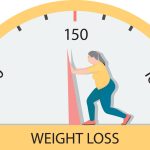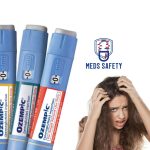Switching From Ozempic To Saxenda For Weight Loss

In the quest for effective weight loss solutions, individuals often explore various options, including medication, to aid their journey. Two medications that have gained popularity in recent years are Ozempic and Saxenda. Both are injectable drugs that have shown promising results in weight management. However, there may be instances when a person decides to switch from Ozempic to Saxenda or vice versa.
In this article, we will delve into the details of switching from Ozempic to Saxenda for weight loss and explore the considerations and potential benefits of this transition.
Understanding Ozempic and Saxenda
Before discussing the transition, it is important to understand the individual characteristics of Ozempic and Saxenda.
1. Ozempic (generic name semaglutide): Ozempic is an injectable medication primarily used for the management of type 2 diabetes. However, it has also been approved by the U.S. Food and Drug Administration (FDA) for weight loss. Ozempic belongs to the class of drugs called glucagon-like peptide-1 receptor agonists (GLP-1 RAs) and works by mimicking the action of a hormone called GLP-1. This hormone helps regulate blood sugar levels, appetite, and gastric emptying, thereby promoting weight loss.
2. Saxenda (generic name liraglutide): Saxenda, like Ozempic, is also a GLP-1 RA and works in a similar manner. However, it is specifically approved for weight management in individuals without diabetes. Saxenda has been shown to reduce appetite, increase satiety, and help people lose weight when used as part of a comprehensive weight loss program, including diet and exercise.
Reasons for Switching Medications
There can be several reasons why someone may choose to switch from Ozempic to Saxenda for weight loss:
1. Effectiveness: While both medications are effective in promoting weight loss, individuals may find that one works better for them than the other. The decision to switch might be based on personal experiences or the recommendations of healthcare professionals.
2. Personal preference: Some individuals may prefer the convenience of using Saxenda over Ozempic due to factors such as injection frequency or ease of use.
3. Insurance coverage: Insurance coverage can play a significant role in medication choices. In some cases, insurance providers may cover one medication but not the other, prompting individuals to switch to the covered option.
Switching Process and Considerations
If you are considering switching from Ozempic to Saxenda or vice versa, it is crucial to involve your healthcare provider in the decision-making process. They will assess your specific needs, medical history, and weight loss goals to determine the most suitable medication for you.
Here are some considerations to keep in mind when transitioning from Ozempic to Saxenda:
1. Consult your healthcare provider: Before making any changes, consult your healthcare provider to discuss your reasons for switching and to ensure that Saxenda is a suitable alternative for your weight loss journey.
2. Dosage adjustment: The dosage and administration of Ozempic and Saxenda differ. Ozempic is typically administered once a week, while Saxenda is taken daily. Your healthcare provider will guide you on the appropriate dosage adjustments during the transition.
3. Lifestyle modifications: Remember that medication alone is not a magic solution for weight loss. It is essential to combine the use of Saxenda with healthy lifestyle modifications, including a balanced diet and regular exercise, to maximize the benefits.
4. Monitoring and follow-up: As with any medication, regular monitoring and follow-up with your healthcare provider are crucial. They will evaluate your progress, adjust the dosage if needed, and address any concerns or side effects that may arise.
Potential Benefits of Switching
Switching from Ozempic to Saxenda for weight loss may offer several potential benefits:
1. Increased flexibility: Saxenda’s daily dosing schedule provides individuals with greater flexibility compared to Ozempic’s weekly injections.
2. Tailored to weight management: While both medications aid weight loss, Saxenda is specifically approved for weight management, making it an attractive option for individuals without diabetes.
3. Personal response: People may find that they respond differently to Ozempic and Saxenda. Switching allows individuals to explore alternative options and potentially find a medication that works better for them.
4. Insurance coverage: If insurance coverage is a factor, switching to the medication covered by your insurance provider can reduce out-of-pocket expenses.
Can you take Ozempic and Saxenda together?
No, Ozempic (semaglutide) and Saxenda (liraglutide) should not be taken together. Both medications belong to the same class of drugs called glucagon-like peptide-1 receptor agonists (GLP-1 RAs) and have similar mechanisms of action. Combining them would result in an increased dose of GLP-1 agonists, which could potentially lead to an increased risk of side effects.
If you are considering switching from one medication to the other, it is important to consult with your healthcare provider. They can guide you through the transition process, provide appropriate dosage adjustments, and monitor your response to the new medication.
Always follow your healthcare provider’s instructions and discuss any concerns or questions you have regarding your medications. They are best equipped to provide personalized advice based on your individual health needs.
Which is better for weight loss, Saxenda Or Ozempic?
Both Saxenda and Ozempic have shown effectiveness in promoting weight loss, but it’s difficult to definitively say which one is better. The choice between Saxenda and Ozempic for weight loss may depend on individual factors and personal preferences. Here are some key points to consider:
1. Approval: Saxenda is specifically approved by the FDA for weight management in individuals without diabetes. On the other hand, Ozempic is primarily approved for the treatment of type 2 diabetes, but it has also been approved for weight loss.
2. Clinical studies: Both medications have been studied extensively in clinical trials. Saxenda has been shown to help individuals lose more weight compared to a placebo, with an average weight loss of around 5-10% of body weight. Similarly, Ozempic has demonstrated significant weight loss benefits, with average weight loss ranging from 4-6% of body weight.
3. Dosage and administration: Saxenda is taken once daily as a subcutaneous injection, while Ozempic is typically administered once a week. Some individuals may prefer the convenience of daily injections, while others may find weekly injections more manageable.
4. Side effects: Both medications can have side effects, although they are generally well-tolerated even though Ozempic has been linked to pancreatitis. Common side effects include nausea, diarrhea, and decreased appetite. It’s important to discuss the potential side effects of Ozempic and Saxenda with your healthcare provider and monitor your response to the medication.
5. Individual response: Each person may respond differently to medications. While one person may see better results with Saxenda, another individual may experience more success with Ozempic. It is crucial to consult with your healthcare provider to assess your specific needs, medical history, and weight loss goals to determine the most suitable option for you.
Ultimately, the decision between Saxenda and Ozempic should be made in consultation with your healthcare provider, taking into account your individual circumstances, preferences, and medical history. They can evaluate your specific needs and guide you toward the medication that may be most beneficial for your weight loss journey. Additionally, combining medication with healthy lifestyle modifications, such as a balanced diet and regular exercise, is essential for achieving sustainable weight loss and overall well-being.
Conclusion
Switching from Ozempic to Saxenda for weight loss can be a viable option for individuals who are not achieving their desired results or prefer the convenience and daily dosing schedule of Saxenda. However, it is important to consult with your healthcare provider before making any changes. They will guide you through the process, ensure the suitability of the medication, and provide necessary adjustments to maximize the benefits. Remember, medication should always be complemented with healthy lifestyle choices to achieve sustainable weight loss and overall well-being.





